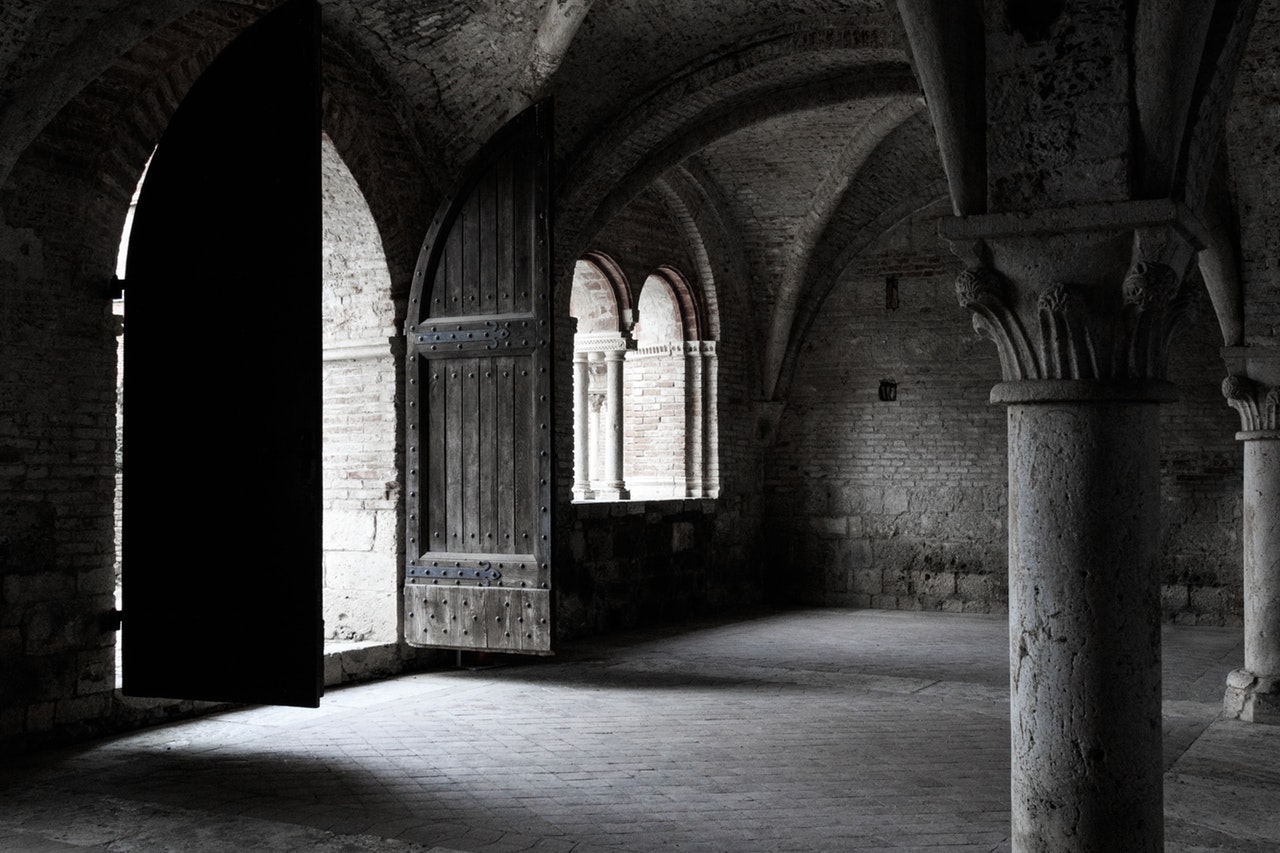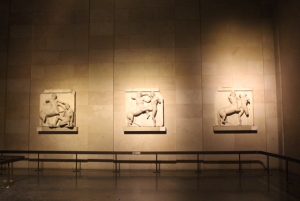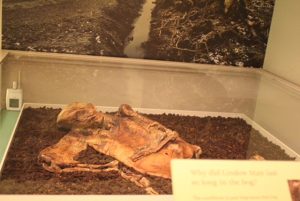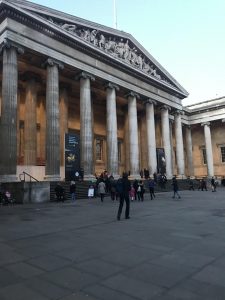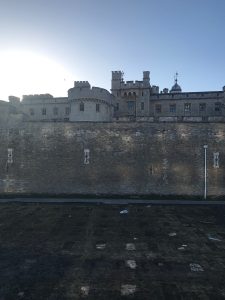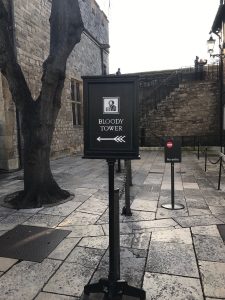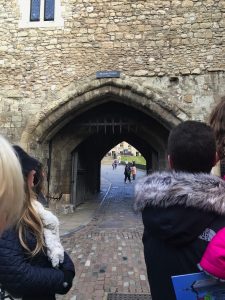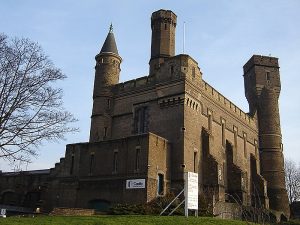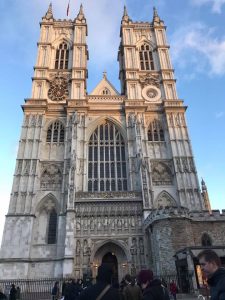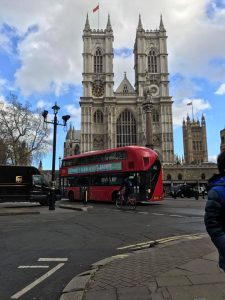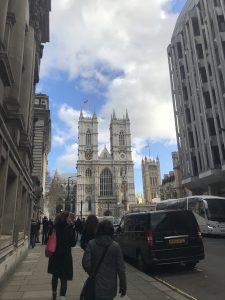Despite its emphasis on relatively safe Britishisms like the crown jewels, the Tower of London’s dark atmosphere and history of death impacted in some very strange ways. I cannot recall ever having been anywhere with such a violent history, so it was surprising that its torturous and murderous past were acknowledged so openly and documented in the tower’s displays. It is especially unexpected, since the Tower of London is a tourist attraction and is therefore motivated to be accessible to the widest possible variety of people (as opposed to just the morbid niche to which I am subscribed).
The open and frank discussion of the World War I executions at the tower, particularly as it relates to the apparent lack of evidence for those convicted, was direct in a way that I found unsettling. The fact that the exact spot of execution was revealed in the written materials and was visible to anyone exploring the monument surprised me, as I cannot remember any parallel experience of this nature within the States. This lack of an American analog could simply be my lack of life experience, or it could be representative of a discrepancy in the way that the British and the United States view the violent patches of their history. From a purely observational perspective, there seems to be a larger tolerance for violent content internationally, as modern American cinema is comparatively tamer than some of its European and Asian in its portrayals violence (for example, there are no American equivalents of Gaspar Noe’s Irreversible, Lars von Trier’s Antichrist, Tom Six’s Human Centipede Trilogy, Srdjan Spasojevic’s A Serbian Film, or any of Takashi Miike’s films). Although I don’t have a conclusive answer, I found myself wondering if there was a genuine unwillingness to confront violence in America (both in terms of fictional content and factual stories), particularly as it relates to the founding of the country and the colonial era.
While my lack of closure on this internal thread was frustrating, this aspect of the tower was not the most introspective part of the day. Instead, I found the preserved inscriptions from prisoners to be captivating. I was shocked to find that these etchings in the walls were usually quite simple, operating more as records of occupancy than the last words of men and women about to be executed. Nevertheless, the sparsity of verbiage was still impactful, especially since some of the occupants’ fates are presently unknown to historians. In this way, there was a certain mystery to some of the carvings. The historical uses of the space mandated a reverence that we had previously only experienced in cathedrals. People gestured to various carvings and the accompanying explanations. They quietly muttered to one another, but there seemed to be a certain uneasiness in allowing this part of the tower to go without acknowledgement through the momentary breaking of traditional speech and behavioral patterns. I was moved by the stories of those imprisoned in the tower, even though many of the wall etchings that I read were primarily short phrases, dates, and names with little significance to most non-historians.
Brian Thornton
